Pilates For Weight Loss
Pilates works well for growing and toning lean muscle. Pilates may help lose weight when combined with a nutritious diet and other workouts like cardio and strength training.
Pilates is a well-liked low-impact workout. It works well for posture correction, lean muscle growth, and toning up.
You can maintain a healthy weight and improve your health by doing Pilates.
What is Pilates?
Pilates is a mental and physical exercise intended to enhance posture, strength, and flexibility. It typically works all of the main muscle groups and promotes the growth of core strength. The Pilates workout routines, that Joseph Pilates created, are primarily centered on the six principles that promote general body awareness.
The Six Principles of Pilates
- Concentration: Pilates emphasizes the value of focus and concentration throughout training, in addition to making sure that the right form is used to engage the muscles. People who are focused are better able to control their emotions and become more aware of their bodies.
- Absolute control is used in the workouts, which prioritize movement quality over quantity and steer clear of jerky or momentum-based movements. Conscious, safer, and more efficient movements are made possible by control. Controlling by using the targeted muscles and the thoughts.
- Centering: Pilates places a strong emphasis on strengthening and activating the body’s core muscles, sometimes referred to as the “powerhouse.” The core is the source of all Pilates movements. This encompasses the hips, buttocks, lower back, and abdomen. Stability, balance, posture, and general body strength are all improved by centering.
- Precision: Every Pilates exercise strives for accuracy and precision while emphasizing alignment and appropriate muscular activation. Every exercise should be performed precisely to teach the right form, focusing on particular muscle groups and optimizing their performance. Additionally, precise motions provide greater control over the alignment of the body and enhance body awareness.
- Breath: An essential component of Pilates. Improved oxygen flow, relaxation, and core engagement are the goals of proper breathing practices. The motions and breathing are synchronized, promoting relaxation, focus, and efficient muscle contraction. By supplying the muscles with oxygen, deep breathing enhances their endurance and general performance.
- Flow: Pilates encourages fluid motions that provide a sense of rhythm and continuity as they go from one exercise to the next. Flow facilitates effective movement patterns and improves the mind-body connection, making for a more elegant and integrated training experience.
Pilates’s Advantages
Pilates provides several weight-loss advantages that enhance general fitness and body transformation:
Enhanced Muscle Mass and Metabolism: Pilates workouts target the arms, legs, back, and core, among other muscle groups, to strengthen and tone them. It increases lean muscle mass, which raises metabolism in general.
Calorie Burning: Pilates exercises can be intense and physically taxing, which increases calorie burn. Pilates workouts that involve controlled movements, resistance training, and activating various muscle groups can aid in weight loss by burning calories.
Increased Energy Use Throughout the Day: Pilates has advantages that go beyond the actual workout. The afterburn effect, also known as the excess post-exercise oxygen consumption (EPOC), is the term used to describe how Pilates activities increase the body’s total energy expenditure throughout the day. This implies that the body keeps burning calories more quickly even after working exercise, which helps people lose weight.
Body Reshaping and Muscular Toning: Pilates workouts emphasize balanced muscular development and the development of long, slender muscles. This may lead to toning and sculpting of the physique. People may experience better muscular tone and more general strength when extra body fat goes down and muscles get more defined.
Improved Posture and Body Alignment: Pilates places a strong emphasis on postural awareness, core strength, and appropriate body alignment. Research demonstrates how Pilates activities affect healthy people’s postural alignment. Better posture, alignment, and spinal stability can result from consistent practice. The body can perform at its best when it is properly aligned, which lowers the chance of discomfort and injuries during exercise. Furthermore, a body that is aligned tends to look more streamlined and thinner.
Suitability for Various Fitness Levels and Low-Impact Nature: One of Pilates’ benefits is that it is low-impact, which makes it suitable for a variety of people, including those recuperating from injuries or with joint sensitivities. While still offering efficient exercise, the regulated movements and focus on core strength lessen joint stress. Because Pilates movements can be adjusted to accommodate varying fitness levels, novices can challenge themselves and advance progressively as their strength and endurance increase.
Types of Pilates
Mat Pilates
Mat Pilates is the most basic type of Pilates. It is performed on the floor and simply uses your body weight as resistance. Although mat Pilates doesn’t require any special equipment, it can be performed with the help of resistance bands, light weights, ankle weights, the Pilates ring, and the Pilates ball. Don’t let the absence of machinery deceive you, though. Bell claims that it’s deceptively difficult.
Reformer Pilates
Reformer Pilates uses a piece of spring-controlled equipment that Joseph Pilates invented that can be adjusted to provide more or less support for every activity. In addition to exercise, reformers are frequently used for rehabilitation and can be useful for isolating particular muscles. Previously available primarily to those training with a private instructor, reformer Pilates is now more widely available because of the popularity of group courses.
Megaformer Pilates
The Megaformer, a modified version of the Reformer, has grown in popularity among people seeking the advantages of Pilates and strength training. Classes are often fast-paced, and the equipment, which was first developed by fitness expert turned businessman Sebastien Lagree, ensures a demanding exercise.
Hot Pilates
Hot Pilates is just Pilates performed in a heated setting, much like hot yoga. A lot of classes are more intense and aim to raise your heart rate. They could include high-impact exercises like squat leaps or low-impact exercises like mat and reformer sessions.
Does Pilates Help People Lose Weight?
Although Pilates can aid in weight loss, it might not be the best strategy. A Pilates class will raise your heart rate, make you sweat, and enhance the function of every joint and muscle in your body, but it won’t burn thousands of calories. Pilates focuses more on how your body feels and moves.
Your body must be in a calorie deficit—that is, burning more calories than you take in—to lose weight. Since Pilates is typically a lower-intensity activity, it may be more difficult to reach a calorie deficit because you may not burn as many calories as you might from, say, a run.
There is more to the equation, though. You may be able to raise your basal metabolic rate or the number of calories you burn at rest, because Pilates may help you gain some lean muscle mass, which aids in fat burning. This is particularly true if you didn’t do resistance training before beginning Pilates.
Another thing to think about is that, if you want to lose weight for aesthetic reasons, your body weight isn’t everything. Numerous tiny auxiliary muscles that you might not have been using as much during other forms of training are activated by Pilates. You might notice more definitions when you start using those muscles. This contributes to the formation of what some have called the “Pilates body.”
How many calories does Pilates burn?
Whether you’re doing a mat or reformer class, how much weight you currently weigh, and how challenging the class is will all affect how many calories you burn throughout Pilates.
A beginner-level Pilates mat class lasting 50 minutes burns about 175 calories for a person weighing 150 pounds. A 50-minute advanced session burns about 254 calories.
In a Pilates reformer class or any Pilates exercise that raises your heart rate, you will burn more calories.
What impact do calories have on losing weight?
You must burn roughly 3,500 calories to lose one pound.
In addition to Pilates, you might want to attempt aerobic exercises like cycling, running, or walking if your objective is weight loss. A nutritious diet rich in fruits, vegetables, whole grains, and lean protein should also be a priority.
How Pilates alters the body
The goal of Pilates is to increase muscle mass and strength. This phenomenon is known as “body recomposition.” By increasing their basal metabolic rate (BMR) and gaining lean muscle mass, body recomposition helps people burn more calories even while they are at rest or in a static position.
The number of calories a person burns while at rest is determined by their BMR. To keep their muscles primed and fed, people with more lean muscle tissue need more calories. Therefore, people’s bodies burn more calories when they are at rest if they have more muscle.
Weight loss is frequently the outcome of improving body composition through regular muscle-strengthening exercises that assist increase lean muscle mass and decrease body fat. Pilates can help with this because of its fundamental exercises and emphasis on attention to the body.
Advice for efficient weight reduction
Some useful weight loss advice is as follows:
- Consuming a healthy, high-protein diet: Consuming a diet rich in protein can help one feel fuller for longer and increase the likelihood that they will maintain a calorie deficit. This is because protein raises the hormone that promotes feelings of fullness and decreases the hunger hormone, ghrelin.
- Engaging in cardiovascular exercises, such as walking uphill, can help people avoid causing their appetite to spike excessively.
- Getting started with resistance exercise: By using weight training in a fitness routine, one can raise BMR and make sure they burn the right number of calories even while they are at rest.
- Try intermittent fasting: This method can help people lose weight while keeping their muscle mass. It entails lasting 16 hours or longer without eating. Additionally, it can assist people in tracking or cutting back on their caloric consumption.
How frequently should you do Pilates?
To reap the full benefits of Pilates, try to practice two or three times a week if you’re new to the technique.
More complex Pilates courses, such as Pilates reformer classes, and combination programs, such as Piloxing (Pilates and boxing) or Yogalates (Pilates and yoga), are also available.
These full-body classes will increase your calorie expenditure more than a typical Pilates mat class.
Attending these kinds of combination lessons a few times a week can help you lose weight the most effectively. Pilates lessons can also be alternated with weighted strength training sessions and aerobic exercises.
You may tone your muscles and reach your weight loss objectives by combining Pilates with strength training, other cardio exercises, and a nutritious diet.
15 Pilates workouts to help you lose weight
Glute bridge
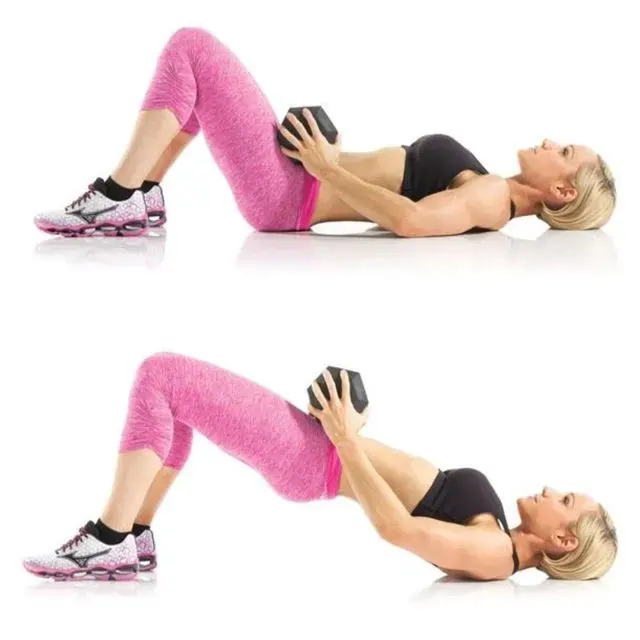
A great exercise for strengthening the hamstrings, core, and glutes is the glute bridge. The glute bridge is a good weight reduction workout since it helps burn more calories by engaging these big muscle groups. The glute bridge is performed by:
- Place your feet flat on the floor, hip-width apart, and bend your knees while lying on your back.
- To raise your pelvis toward the ceiling, contract your core and push your hips upward.
- Before lowering yourself back down, squeeze your glutes and hold for a few seconds.
- Focus on engaging your core and glutes to lift as you perform this exercise ten to fifteen times.
Spine twist
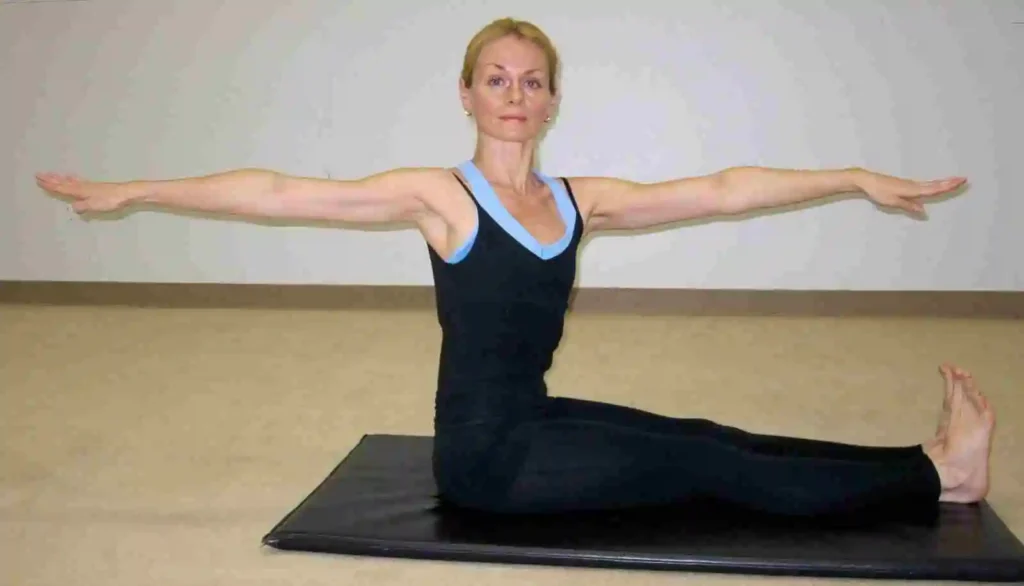
This Pilates exercise is excellent for strengthening the spine, shoulders, and obliques. In addition to toning the waist and abdomen, this exercise helps with posture. To execute the twist of the spine:
- Your legs should be straight out in front of you while you sit upright.
- Maintain a comfortable posture while extending your arms to the sides.
- With your hips steady and your core active, rotate your torso to one side.
- Twist to the opposite side and return to the center.
- Twist ten times on each side while maintaining core engagement.
Single-leg stretch
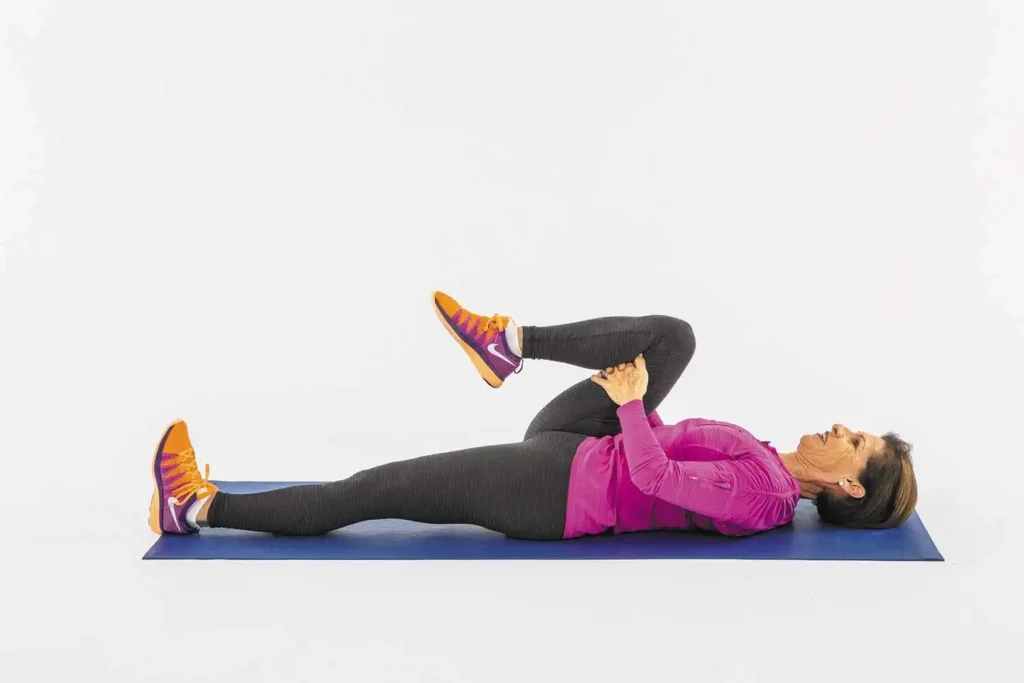
An efficient ab workout that works on stability and the lower abdominals is the single-leg stretch. This workout increases total caloric expenditure while strengthening the legs and core. The single-leg stretch is done as follows:
- To begin, raise your head and shoulders off the mat and lie on your back with your knees bent.
- Bring the opposing knee to your chest and extend the other leg out.
- Pull the leg in toward your chest while holding your knee with both hands.
- Legs should be switched, with the first leg extended and the other leg brought in.
- Aim for 10–15 repetitions of each leg while you alternate your legs in a smooth, controlled motion.
Roll up
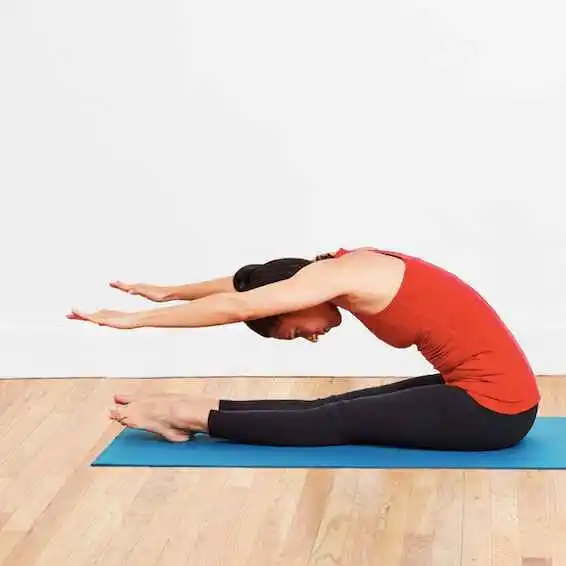
A difficult Pilates exercise that targets the entire core, especially the abdominal muscles, is the roll-up. Additionally, this exercise improves spine flexibility, which enhances total functional fitness. To execute a roll-up:
- To begin, lie on your back with your arms stretching upwards and your legs outstretched.
- Reach your hands toward your feet as you slowly raise your torso, then articulate your spine one vertebra at a time.
- One vertebra at a time carefully reverses the motion once you’re seated until you’re back to where you were before.
- Focus on control and fluid movement as you perform 10–15 repetitions.
One-leg circle
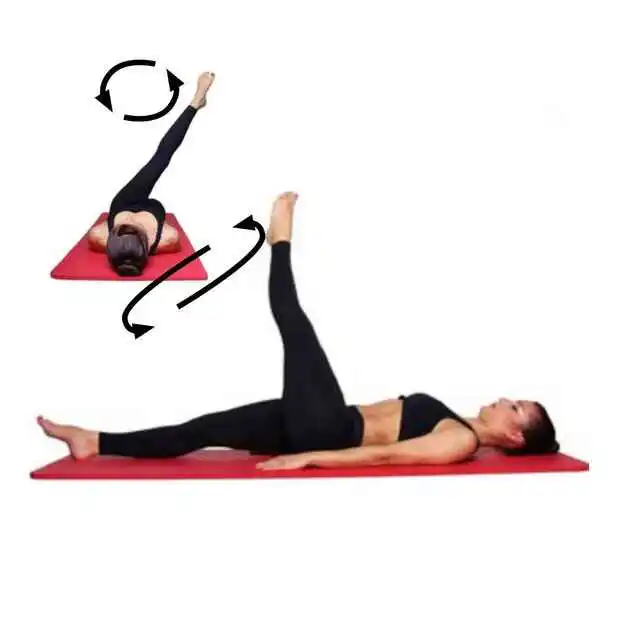
An excellent exercise for strengthening the legs, especially the hip flexors, and enhancing core stability is the one-leg circular. It aids in calorie burning as well. To complete a single-leg circle:
- With one leg flat on the floor and the other extended toward the ceiling, lie on your back.
- For stability, keep your arms by your sides.
- From your hip joint, move the lifted leg in little circles.
- Increase the circles’ size gradually before turning them around.
- For each leg, complete ten circles in each direction.
Crisscross
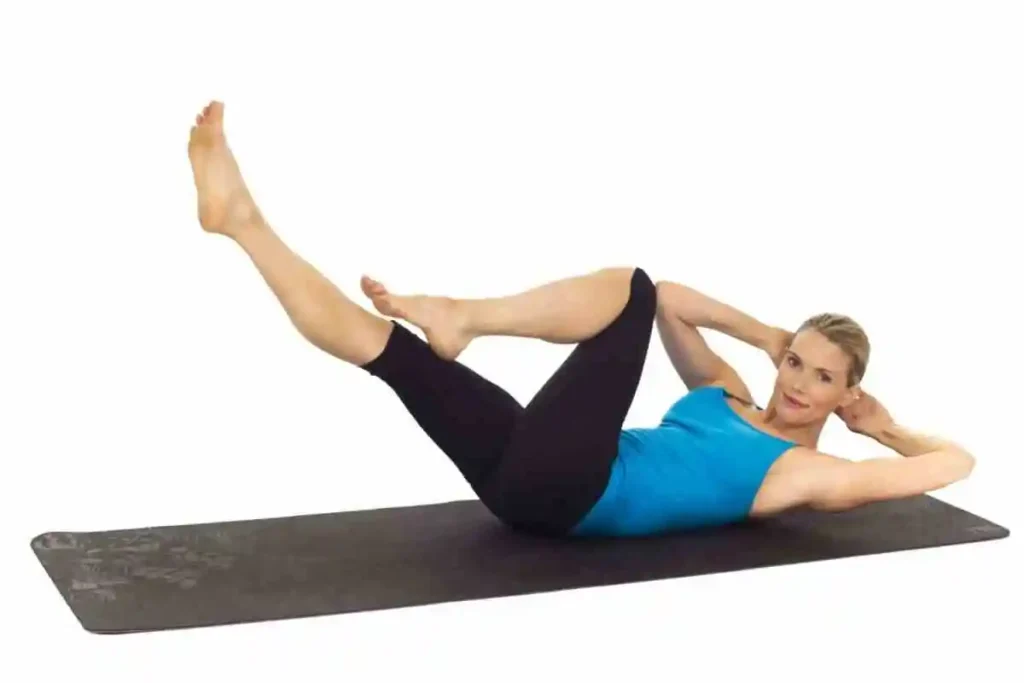
A dynamic Pilates exercise that works the obliques and tones the core, particularly the deep abdominal muscles, is the crisscross. To execute a crisscross:
- Lying on your back, raise your knees to your chest.
- Keeping your hands behind your head, raise your head, neck, and shoulders off the mat.
- Twist your torso to bring your opposing elbow nearer the knee of the extended leg as you straighten one leg.
- As you extend the other leg, switch sides and move the opposing elbow toward the knee.
- Do ten to fifteen repetitions on each side using a controlled, alternating motion.
A plank
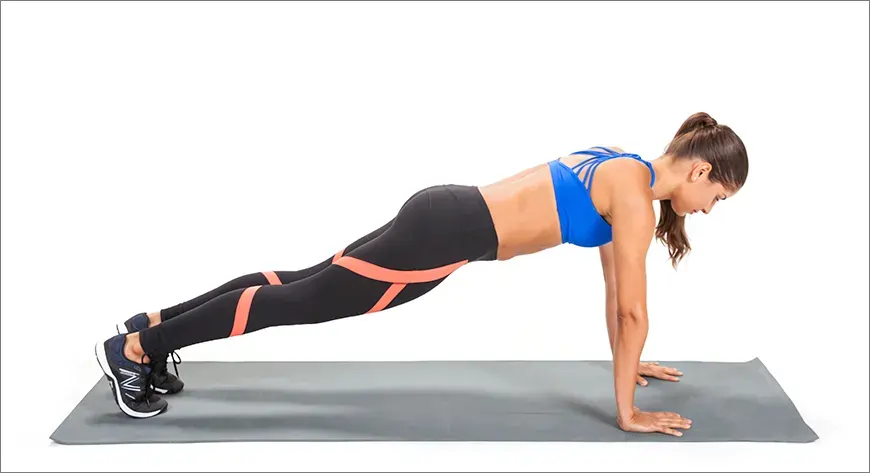
It is among the best exercises for working the entire body, but particularly the core. Maintaining a plank posture engages the arms, legs, and glutes, improves the abdominal muscles, and increases endurance. To execute a plank:
- With your arms straight and your body in a straight line from head to heels, begin in the push-up position.
- Keep your hips level and your lower back from arching or sagging by using your core.
- To gradually lengthen the duration, hold the position for 30 to 60 seconds.
Plank on the side
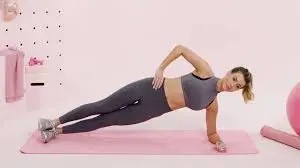
A plank version that works the obliques, shoulders, and glutes is the side plank. This workout helps reduce fat around the waist, strengthens the side body, and enhances core stability. How to execute a side plank:
- With your feet stacked and your legs outstretched, lie on your side.
- Raise your hips off the ground so that your head and heels make a straight line, placing your elbow just beneath your shoulder.
- After 30 to 60 seconds of holding the position, flip sides.
All four
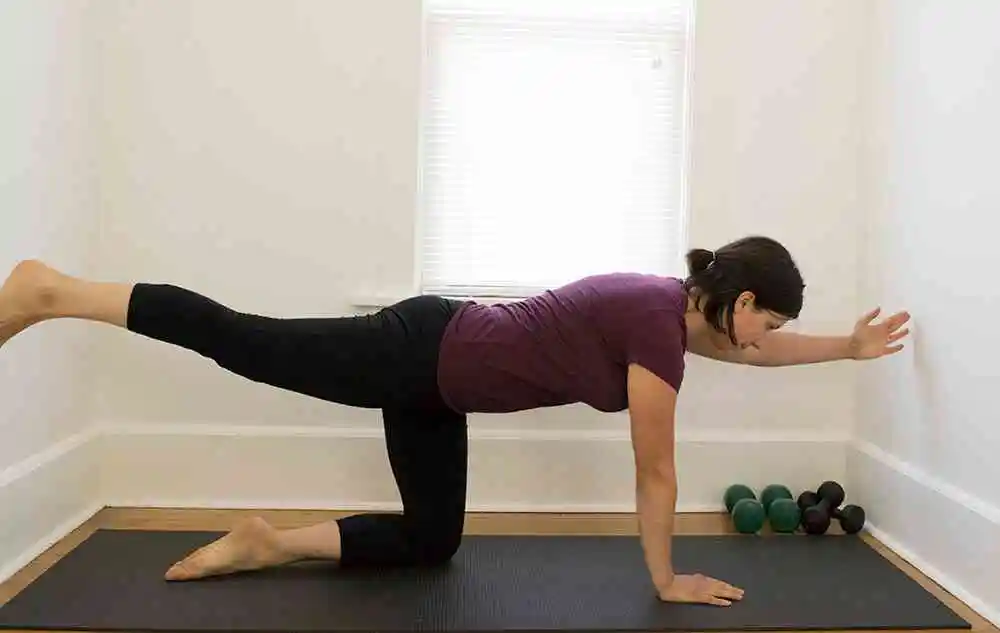
The quadruped position, sometimes referred to as the all-four position, aids in enhancing balance, stability, and core strength. It strengthens the glutes, shoulders, and abdominal muscles. To execute all four:
- Place your knees behind your hips and your wrists directly beneath your shoulders to begin on all fours.
- Lift your left leg and right arm off the ground and extend them straight by using your core.
- Lower your arm and leg back down after a brief period of holding the position.
- Aim for 10–12 repetitions per side as you switch sides and repeat.
Scissors kick
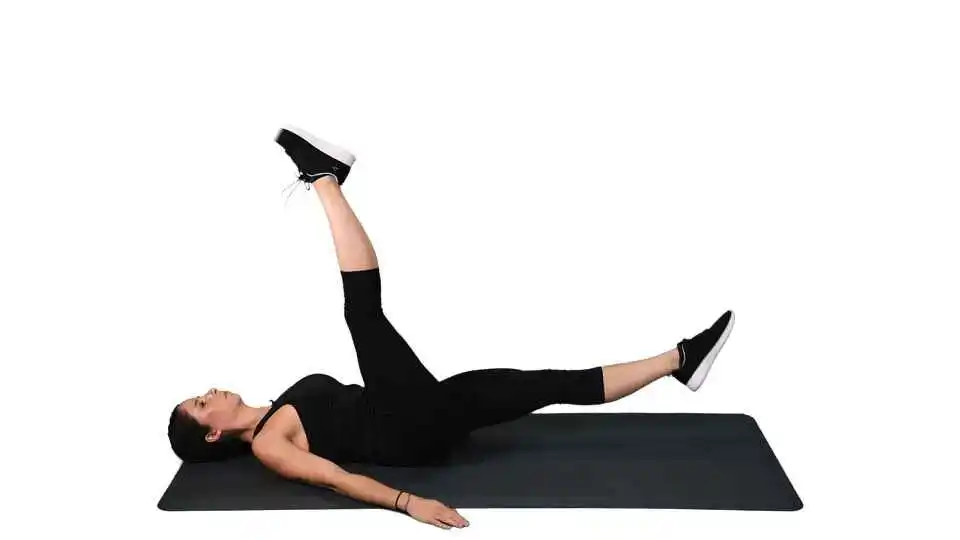
The scissors kick improves leg strength and control while targeting the hip flexors and lower abdominals. Additionally, it encourages hip and hamstring flexibility. To execute the scissors kick:
- Rest on your back with your legs extended and your arms by your sides.
- To maintain a straight posture, raise your legs toward the ceiling.
- Keeping the opposite leg raised, lower one leg toward the floor.
- Leg-scissoring is a regulated way to switch legs.
- Aim for smooth, controlled motion as you perform for 20 to 30 seconds.
Toe taps
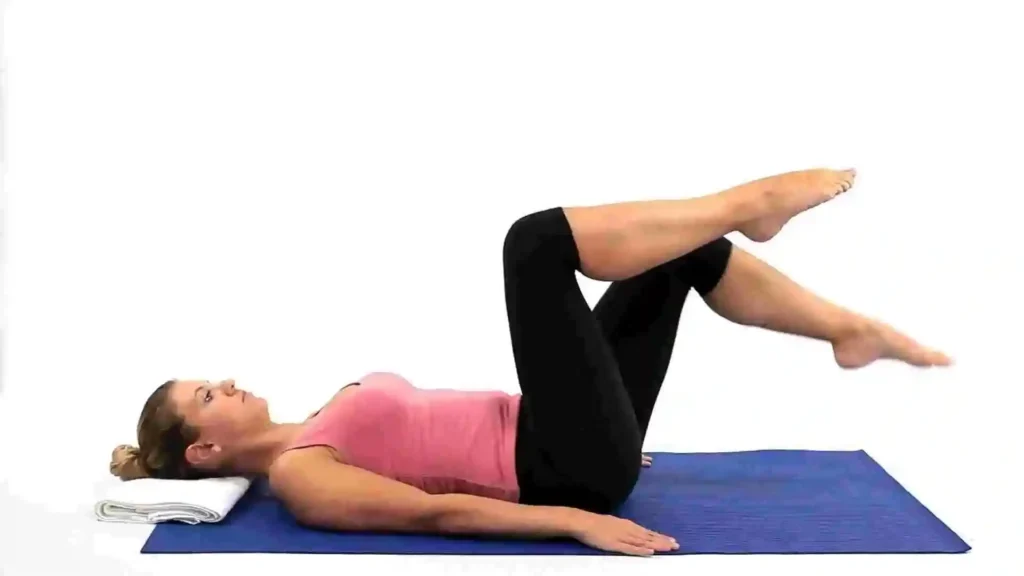
A quick and easy workout that works the lower abdominals and improves balance and coordination is toe-tapping. Additionally, they strengthen the legs and increase stability. To tap your toes:
- With your feet raised off the ground and your knees bent at a 90-degree angle, lie on your back.
- To tap the floor, slowly drop one foot and then raise it back to the starting position.
- Keep your core active as you switch feet, tapping each one on the ground.
- Make 20–30 taps, paying attention to deliberate, gradual motions.
Side kicks
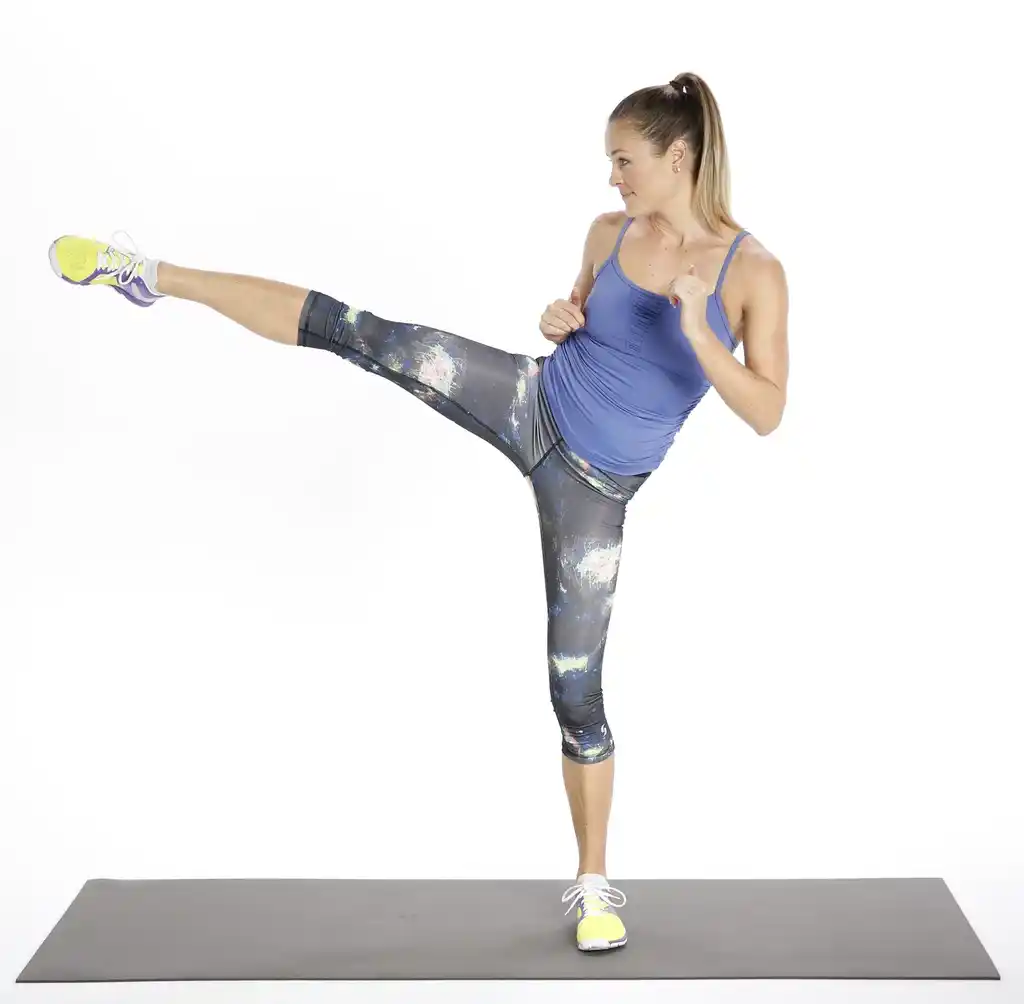
Side kicks are a great way to improve balance and coordination while training the hips, thighs, and core. This exercise helps work the legs and glutes while strengthening the complete side body. To execute side kicks:
- With your legs outstretched and your head resting on your arm, lie on your side.
- Keeping your core active, raise your upper leg to hip height and kick slightly forward and backward.
- Before swapping sides, kick for 15 to 20 seconds in each direction.
Pilates pushups
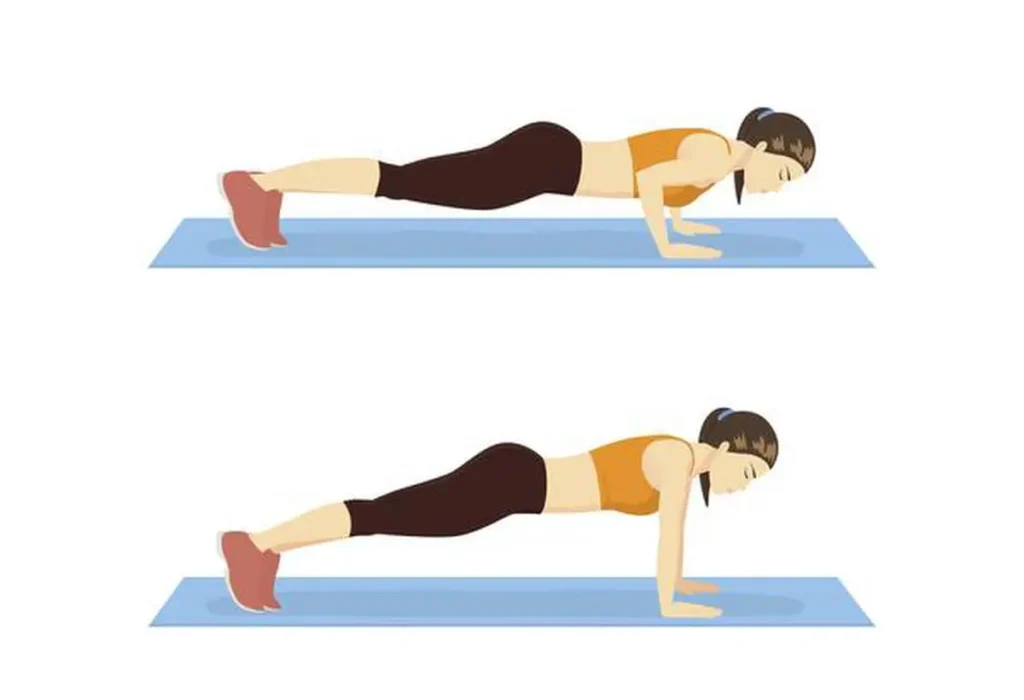
Pilates pushups are excellent for building upper body strength and losing weight since they work the arms, chest, shoulders, and core. To execute pushups in Pilates:
- Place your hands slightly wider than shoulder-width apart to begin in the plank posture.
- Maintaining your body in a straight line, lower your body as you would in a conventional pushup.
- Throughout the exercise, keep your core engaged and push yourself back up.
- Do this 8–12 times.
Mountain climber
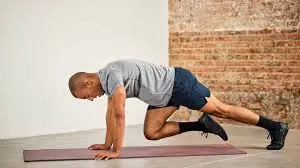
A high-intensity workout that works every part of the body, mountain climbers increase heart rate and aid in fat loss. Cardiovascular endurance, core strength, and coordination are all enhanced by this workout. To execute mountain climbers:
- Place your hands beneath your shoulders and begin in the plank position.
- Rapidly switch between bringing one knee to your chest and bringing the other knee in while extending the leg back.
- For 30 to 60 seconds, keep quickly switching legs.
Runner’s lunge
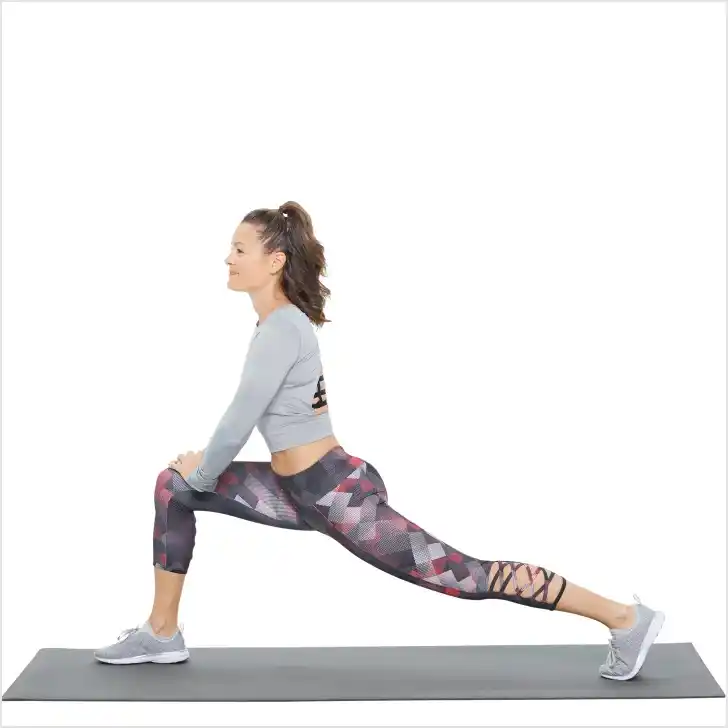
A dynamic stretching and strengthening exercise that targets the legs, hips, and core is the runner’s lunge. By focusing on several muscle groups, it promotes strength and flexibility while aiding in weight loss. To execute the lunge of the runner:
- Step forward with one foot to begin a deep lunge while standing.
- Engage your core and lower your hips while maintaining your rear leg stretched behind you.
- After a few seconds of holding, switch legs and perform 10–12 repetitions on each side.
FAQs
What are Pilates’ main advantages?
Pilates enhances general body awareness while improving posture, flexibility, and core strength. Through deliberate, controlled movement, it also aids in stress reduction and injury prevention.
Is it possible to lose weight with Pilates?
Building lean muscle and raising general activity levels are two ways that Pilates can help people lose weight, but the benefits are amplified when combined with aerobic exercise and a nutritious diet.
Does Pilates have a high-calorie burn?
According to Long, Pilates of any form, even wall-based Pilates, can help reduce body weight even if it may not be as effective at burning calories as intense aerobic activities. It also aids in the development of lean muscle mass, which can raise resting metabolic rates and calorie expenditure.
Does Pilates increase muscular mass and burn fat?
When it comes to gaining muscle and burning fat, Pilates is an incredible tool. Hundreds of Pilates exercises will help you get in shape by focusing on particular muscle groups. Whether you want to tone your abs, build your buns, or lose weight, the many classes that are offered offer sequences that will help you achieve your fitness objectives!
Is Pilates beneficial for beginners?
Of course! Pilates is ideal for both novice and expert practitioners since it can be tailored to all fitness levels and offers fundamental strength and mobility.
In what ways does Pilates promote mental well-being?
Pilates’s attentive approach improves mental clarity and encourages relaxation while lowering stress and anxiety. Pilates breathing exercises also promote emotional health.
Reference
- Chertoff, J. (2018, September 29). Can practicing Pilates help you to lose weight? Healthline. https://www.healthline.com/health/fitness-exercise/pilates-for-weight-loss#takeaway
- Horne, B. (2023, May 9). Is Pilates good for weight loss? https://www.medicalnewstoday.com/articles/is-pilates-good-for-weight-loss#summary
- Gupta, A. (2024, November 25). Pilates for weight loss: 15 effective exercises to burn calories and tone your body. Health shots. https://www.healthshots.com/fitness/weight-loss/pilates-exercises-for-weight-loss/
- Angle, S. (2024, December 7). We’ve Reached Peak Pilates—But Is it Worth the Hype? HUM Nutrition Blog. https://www.humnutrition.com/blog/benefits-of-pilates-weight-loss/

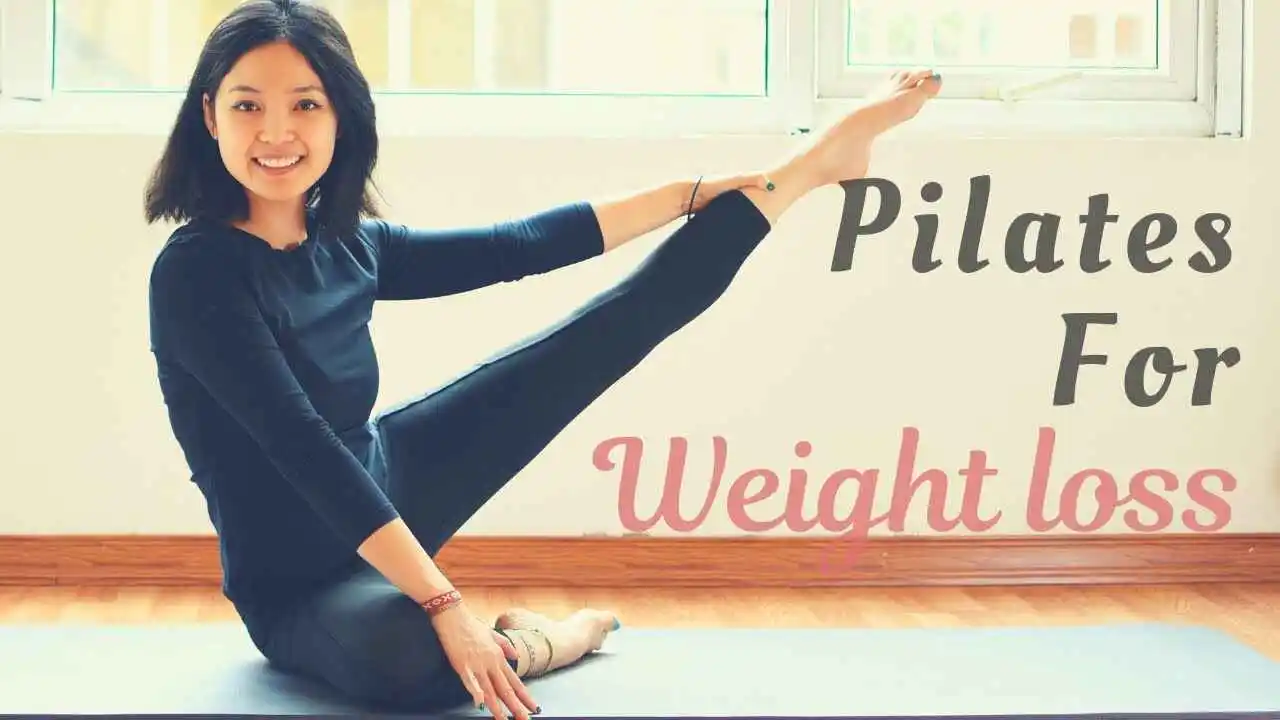


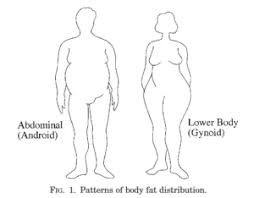
One Comment